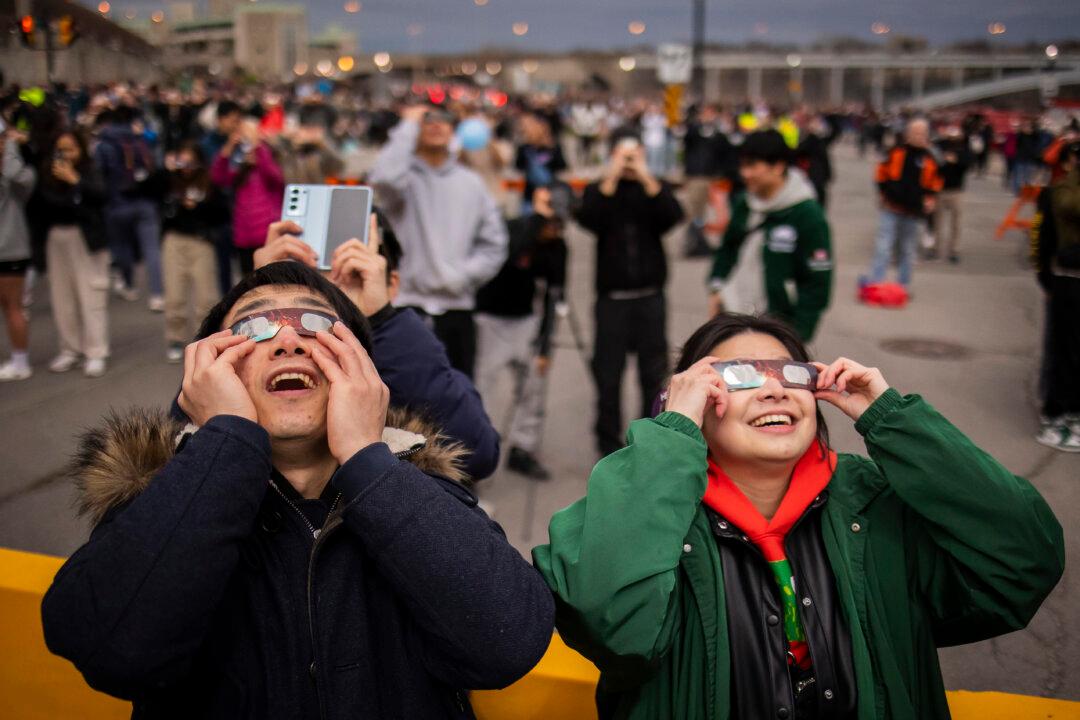Relief and excitement were the emotions of the day April 8 for many hopeful eclipse enthusiasts in Ontario, with successful totality sightings in prime viewing spots despite Environment Canada’s prediction of “mainly cloudy” skies.
The eclipse’s path of totality passed through Ontario, Quebec, New Brunswick, Nova Scotia, Prince Edward Island, and Newfoundland on the afternoon of April 8, with millions flocking to sites within the band in the hopes of witnessing the rare celestial phenomenon. The path of totality refers to places where people will see the sun entirely blotted out by the moon.





